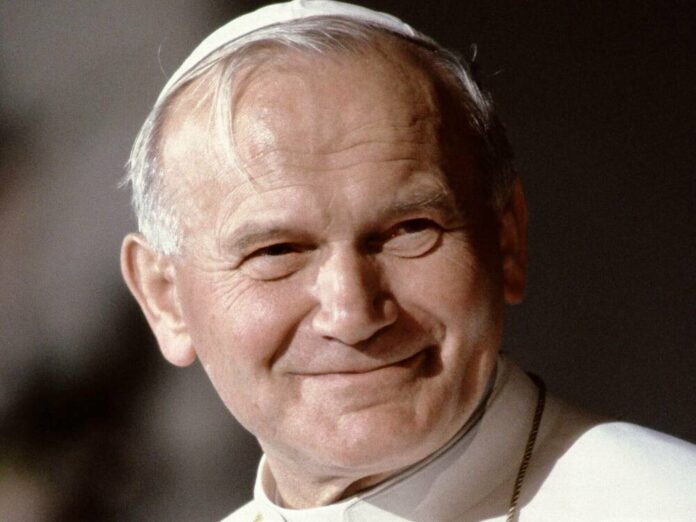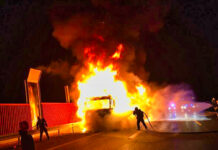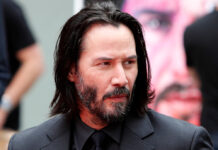
He would have been 100 years old
He was without a doubt a star, perhaps the greatest of his time. That sounds like a sacrilege, and in fact hardly a term sounds so inappropriate, even desecrating for a man who saw himself as the representative of Christ on earth and who embodied the head and the highest moral authority for over 1.3 billion Catholic Christians . But it was just the case that the Polish Pope John Paul II (1920-2005) gave his office a dazzling, almost mystical splendor that not only enchanted many millions of believers and outshone almost all other great personalities worldwide.
On May 18, the world Catholic community celebrates the 100th birthday of John Paul II, who was born in 1920 as Karol Józef Wojtyla in Wadowice in southern Poland. This Monday, today’s Pope Francis (83) celebrated an early mass at the side altar of St. Peter’s Basilica, where the sarcophagus of John Paul II is located. The service was broadcast live on Vatican Radio and on the Internet. The Polish bishops also celebrate the 100th birthday and the life of their famous colleague with the # ThankYouJohnPaul2 initiative, a virtual “birthday cake” on social media.
“His human warmth and ability to suffer did it to people. Values that do not count much in a fast-paced world of hunger for success made him an idol, especially among young believers. In this respect, he came close to the biblical claim to Peter to be the rock on which the church is founded, “wrote the” We “.
John Paul II was an edgy type. But like a pop star, he was able to combine different personality facets into a widely shining, characterful kaleidoscope that fascinated the world.
The young Wojtyla initially studied philosophy and Polish literature in Kraków. He also loved the theater. He already participated in theater performances as a student, later he belonged to the experimental theater group “Studio 39”. He wrote poems, which later read the Italian actress Claudia Cardinale (82), and under the pseudonym Andrzej Jawien the dramas “Jeremiasz” (Jeremia) and “In the shop of the goldsmith”.
The PhD in philosophy and theologian taught in Kraków from 1953 as a professor of moral theology and from 1954 at the Catholic University of Lublin philosophy and social ethics. He had long been a priest when his play “The Brother of Our God” had its Polish premiere. And in 1969 his main philosophical work “Person und Tat” was published. Karol Wojtyla was already the Archbishop of Kraków.
As a schoolboy he was an enthusiastic soccer player. He kicked in a school team that often competed against the Jewish team, although Karol also liked to step in as a goalkeeper for the Jewish team if the team didn’t have enough players.
The priest Wojtyla was a passionate skier who also loved water sports and even paddled as Pope on the Masurian Lakes and went climbing in the Beskids of his homeland Poland – or “could wag the slopes of the Marmolada in the Dolomites in his white cassock” “We” once described it.
Cardinal Stanislaw Dziwisz (81) describes the sporting head of the church at first as having a hard time with the restrictions of his office, in his book “A life with Karol”. Dziwisz was the Polish private secretary and one of John Paul II’s closest confidants. He wrote that the pope was initially secretly exploited with three prelates. For the first time the four had escaped from the summer residence Castel Gandolfo two years after the papal election in 1978. In order not to attract the attention of the Swiss Guard, the spiritual quartet used the car of Jozef Kowalczyk, today’s papal nuncio in Poland. The Pope hid behind a spread newspaper.
The goal of this first tour was the ski area of Ovindoli in Abruzzo. The Holy Father did not wear white cassocks, but sunglasses and normal ski clothing. No one had recognized John Paul II – except for a boy about ten years old. He immediately shouted: “The Pope, the Pope!” One of the prelates sent the child back to his little friends in a spiritually minded manner, and the Pope troop went home. After returning, John Paul II exclaimed, “We did it!” Dziwisz writes that a total of over 100 secret sports excursions have been undertaken. The Vatican and journalists were tricked every time. Only a few initiated police officers came with him on later tours.
He was a charismatic man who, in the 26 years of his pontificate, has always interfered verbally in world politics. Within the church he was certainly not a reformer, but a conservative keeper who strictly adhered to the celibacy and sexual morality of the Catholic Church. Critics also criticize his handling of the abuse scandals in the church. The Vienna Cardinal Christoph Schönborn said in an interview with the church newspaper “Der Sonntag”: “He was somehow overwhelmed with the subject of ‘abuse’ … I think he was such a louder person that he couldn’t imagine it.”
But it also set historical standards. John Paul II denounced the misconduct in his church’s 200-year history, the Inquisition, the Wars of Faith. He opened up to Islam, met the Palestinian leader Yasser Arafat (1929-2004) and the Iranian President Mohammed Chatami (76). And he asked forgiveness for the persecution of Jews on behalf of the Church. When he visited the Jad Waschem Holocaust Memorial in Jerusalem, he said: “As Bishop of Rome and successor to the Apostle Peter, I assure the Jewish people that the Catholic Church is deeply saddened by the hatred, persecution and all anti-Semitic acts that have ever taken place were committed against Jews somewhere by Christians. ”
John Paul II will go down in world history as the man who contributed significantly to the erosion of the communist Eastern Bloc. “Everything that has happened in Eastern Europe in recent years would not have been possible without this Pope,” wrote Mikhail Gorbachev (89), the last general secretary of the 1991 Soviet Union, in his memoirs.
On the other hand, this politically indomitable churchman scourged pure capitalism, maximizing profits and the financial and economic systems “dominated and manipulated” by western industrialized countries, as well as the expansionary foreign policy of the USA. In 2002, he denied US President George W. Bush (73) his blessing for a campaign in Iraq.
On May 13, 1981, Turkish right-wing extremist Mehmet Ali Agca shot the Pope three times with a pistol at St. Peter’s Square in Rome. A bullet hit his life in the lower abdomen and caused injuries that he suffered all his life. After many years of investigation, an Italian committee of inquiry came to the conclusion that the attack was carried out on behalf of the Soviet leader Leonid Brezhnev (1906-1982) by the military secret service GRU in cooperation with the Bulgarian secret service.
The Pope forgave the assassin Ali Agca shortly after the fact. Three years later he even visited him in prison and blessed him. After his release, Agca placed a bouquet of roses on the Pope’s tomb in 2014. A year after the attack, John Paul II visited Portugal to thank Our Lady in Fátima for having survived the Agca shots. Then the Spanish priest Juan Maria Ferández y Krohn (born 1950) tried to kill him with a bayonet. John Paul II was only slightly injured. The Pope also blessed this man the next day.
Lolek, his nickname, was even more popular with women than with his male followers. During his 104 trips abroad – which is why he was called the “urgent father” – he was particularly euphorically celebrated by female Christians. They loved this angular face, which could smile so mischievously, and not only Catholic nuns raved: “You are more beautiful than Jesus Christ”.
There were always rumors about women in his life that he never commented on. There is the story of Wanda Póltawska (98), a married psychiatrist from Lublin, where the Pope once held a professorship. For 50 years, the two had an intimate pen pal. In 1962 she fell ill with colorectal cancer. Karol Wojtyla wrote a personal letter asking the Italian priest and healer Pio von Pietrelcina (1887-1968) to intercede. In November 1962 the patient was healed before her operation, there was no medical explanation for it. Wanda Póltawska became one of his closest confidants and was also on the deathbed of the Pope.
The relationship with Anna-Teresa Tymieniecka (1923-2014), a three-year younger American philosopher who was born in Poland, was much more mysterious. Karol met her in 1973 when he was Archbishop of Kraków. Anna-Teresa Tymieniecka had long been married to Harvard professor Hendrik Houthakker (1924-2008), an advisor to US Presidents Johnson and Nixon, and lived in the USA. She too became a close confidante.
In 1976 Cardinal Wojtyla traveled to the United States. He also lived in Tymieniecka’s country house in Vermont. Shortly after his departure, he wrote her a letter that was published in 2016. It says, among other things: “You write that you are completely torn, and I have no answer to these words. I feel you everywhere, in all possible situations, whether you are close or far. I still remember exactly where I was when you told me: ‘I belong to you.’ I was afraid of this gift. But I now know that I have to accept this gift as a gift from heaven. ”
The two have written for almost 30 years. The Vatican subsequently commented on a BBC documentary that there was “more smoke than fire”. Edward Stourton, the author of the TV documentary, also sees the two as “more than friends, but less than lovers”. And Anna-Teresa Tymieniecka told the US journalist Carl Bernstein: “No, I never fell in love with the cardinal. How could I have fallen in love with a middle-aged minister? I am also a married woman. ”
His last decade was also marked by illness. In 1992, John Paul II had an intestinal operation in which a benign tumor was removed. Two years later he fell in his bathroom and broke his thigh. During the subsequent operation, he got an artificial hip joint. In addition, he continued to suffer from the aftermath of the 1981 attack. This path of suffering was made visible by the effects of Parkinson’s disease, which dramatically changed his tight appearance. He could barely walk and ended up barely speaking due to laryngitis. Nevertheless, he fulfilled his duty ironly.
On Easter Sunday 2005, he appeared hunched over the window of his study and donated his last Easter blessing to thousands of mostly weeping believers who had gathered on St. Peter’s Square. He died on April 2 at 7:37 p.m. Shortly before he fell into a coma, he said his last sentences in Polish: “The world lacks wisdom.” And: “Let me go to the father’s house!” At his funeral, over 3.5 million believers made a pilgrimage to Rome.
He was beatified on May 1, 2011 after only six years. His German successor, Benedict XVI retired today. (93), had approved the canonization decree because John Paul II was granted the alleged healing of a French nun who had Parkinson’s disease.
The canonization took place only three years later. The Vatican had also recognized the second necessary miracle and awarded the recovery of a Costa Rican woman to the late Polish pope. Floribeth Mora Diaz was healed of a brain aneurysm on the day of the beatification of John Paul II. The canonization ceremony, this time by Pope Francis, was attended by over a million believers in St. Peter’s Square. His feast day is October 22nd.
The first musical about John Paul II was performed in Bratislava (Slovakia) in 2016. The profane title: “Pope occupation”. The musical “Karol” came on stage in Krakow in 2017, with the Polish pope as superstar. The home church “To the Lady of Jerusalem” in Wadowice, the birthplace of Karol Wojtyla, has become a place of pilgrimage. And in Czestochowa (Poland), a 14-meter-high Pope John Paul II made of fiberglass rises, weighing ten tons. He smiles mildly and spreads his arms. He welcomes people. In heaven and on earth.
















